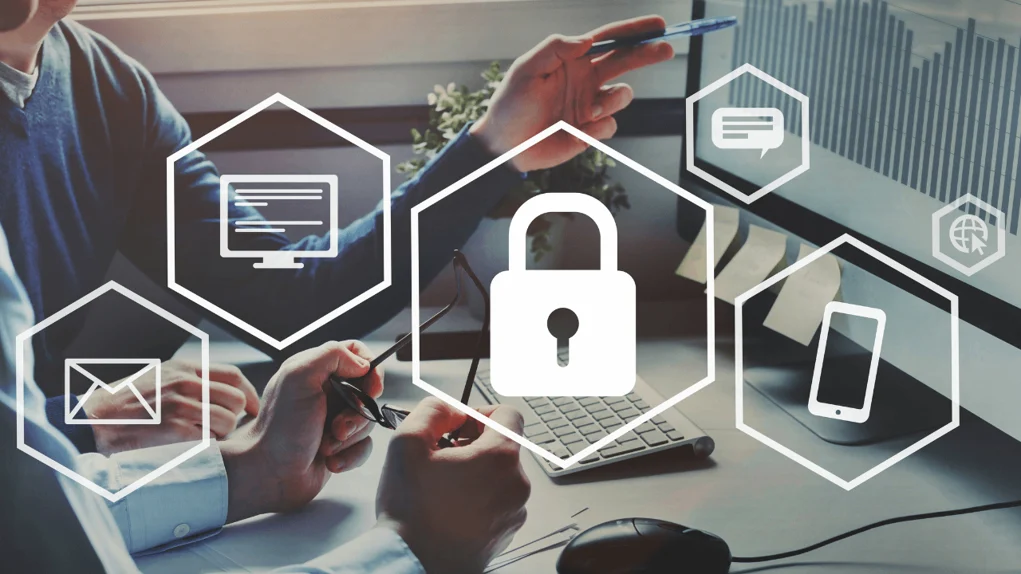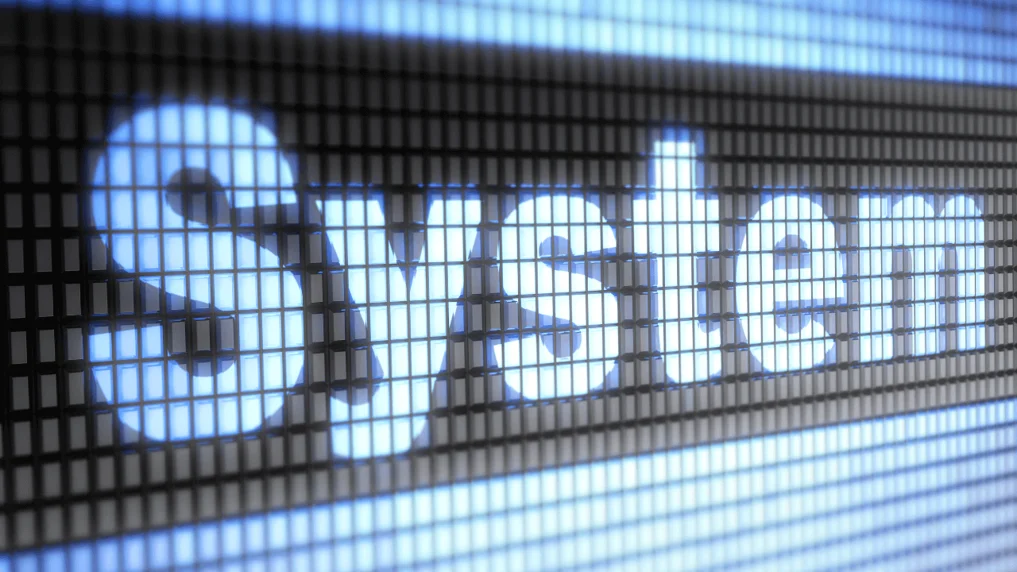
Choosing the Right Cybersecurity Monitoring System: Tips and Tools
Cybersecurity monitoring is a crucial pillar in a holistic managed detection and response (MDR) strategy, especially in the face of increasingly sophisticated cyber attacks. Many conventional cybersecurity monitoring tools no longer merely aim to prevent attacks through detection; they now also simultaneously respond to threats, often in real time. At the same time, the emergence of generative AI threatens to pull the rug out from underneath the best-established tools and mandates the need for a new level of thinking and action.
This write-up will examine various cybersecurity monitoring solutions, which ones best leverage AI and machine learning (ML), and how to determine the right one for your organization.
What is Cybersecurity Monitoring?

Cybersecurity monitoring is the continuous process of overseeing an organization’s network and systems to detect and respond to cyber threats proactively. This involves using a variety of cybersecurity monitoring tools, techniques, and threat intelligence to identify potential security threats and vulnerabilities. By continuously monitoring, organizations can respond swiftly to minimize damage from data breaches or other security incidents. This proactive approach is a critical component of an organization’s overall cybersecurity posture, enabling security teams to detect and respond to cyber threats in real-time, thereby reducing the risk of significant security incidents.
Definition and Key Facts
Importance of Cybersecurity Monitoring

In today’s digital landscape, cybersecurity monitoring is indispensable for organizations. The frequency and sophistication of cyber threats are escalating, making it imperative for organizations to detect and respond to these threats in real-time. Effective cybersecurity monitoring reduces the risk of data breaches and other security incidents by providing real-time visibility into security-related events and activities. Additionally, it helps organizations improve their security posture by identifying vulnerabilities and weaknesses in their systems and networks through behavioral analytics. By addressing these vulnerabilities promptly, organizations can fortify their defenses against potential cyber threats.
Why Cybersecurity Monitoring is Crucial for Organizations
Cybersecurity Monitoring is a System, Not a Tool

Effective cybersecurity monitoring leverages continuous monitoring, threat hunting, and several technologies, each of which addresses a different threat surface in your business. While there used to be a bright line between monitoring for threats and preventing them, that is no longer the case in today’s AI-enhanced threat landscape. The vast majority of modern cybersecurity monitoring tools leverage information obtained through analytics to simultaneously prevent attacks, frequently utilizing AI and machine learning to adapt to both known and unknown threats.
Endpoint Monitoring
Modern endpoints include more than mobile devices; they require sophisticated endpoint detection systems and user behavior analytics to monitor and protect devices such as laptops and mobile devices. Endpoints frequently incorporate gateways into cloud storage and virtual machines. This threat surface is ideally suited to an AI-based solution that automatically detects suspicious pattern changes while simultaneously preventing unauthorized changes.
Encryption Monitoring
Encryption protects sensitive data as it travels to and from users and is also a crucial component of business and industry standard compliance. An organization may have a huge variety of data that flows through multiple points, all necessitating different types of encryption. An AI-based encryption scanner can assist human diligence and expertise in spotting gaps in an encryption protocol. Additionally, data loss prevention tools can assist in encryption monitoring by identifying and mitigating potential data breaches.
Intrusion Detection Systems
The most fundamental part of any cybersecurity monitoring suite is continuous intrusion detection, a key aspect of network security, or catching the threats that have gotten through security measures. Modern intrusion detection programs, however, may also incorporate penetration testing. “Pen testing,” as it is known within the cybersecurity industry, uses data from past threats and what is known about the current threat environment to identify existing vulnerabilities within your system. In doing so, an effective intrusion detection program not only identifies where breaches have occurred but can prevent attacks altogether.
A combination intrusion detection program is where artificial intelligence and machine learning become immensely powerful tools in protecting your systems. Generative AI and ML technologies can collect, analyze, and, in some cases, even respond to an ever-changing threat environment in near real-time. That’s why when selecting an intrusion detection program, it’s important to ensure it includes both defensive mechanisms — the intrusion detection itself — as well as a pre-emptive pen-testing feature. Additionally, having a robust security incident response plan is crucial for effectively responding to detected threats.
Compliance Monitoring
Internal policies stem from lessons learned, and verifying continuous compliance with them is a crucial component of building a resilient security stance internally. Industry and regulatory standards change in response to rapidly evolving attack methods and threats, making regulatory compliance an extremely complex area of cybersecurity monitoring. While automation can detect gaps and alert when changes are necessary, this is one facet of cybersecurity monitoring in which AI-based technologies working in tandem with humans are essential. (Check out the Strengthening Cybersecurity Resilience case study featuring BH Compliance)
Network Security Monitoring Tools
Network monitoring now includes far more than a basic firewall, encompassing network behavior analysis to detect anomalies, malicious activities, and potential security threats in real time. AI-enhanced protection stops known and unknown threats by utilizing machine learning in real time. When selecting a network monitoring tool, take the time to learn about and assess whether it is using machine learning or other advanced technologies for maximum effectiveness and longevity.
Other Niche Monitoring Tools
Other cybersecurity monitoring tools will be highly specialized for industrial applications or, alternately, simply target a hyperspecific niche of an organization’s threat surfaces. This could include bespoke, automated email protection systems or in-person social engineering tests. Additionally, 'threat detection and response' tools can be highly specialized for specific applications, providing tailored solutions to unique security challenges.
Benefits of Continuous Monitoring

Continuous monitoring is a cornerstone of effective cybersecurity, offering numerous benefits that significantly enhance an organization’s security posture. By implementing continuous monitoring, organizations can stay ahead of potential threats and minimize the risk of data breaches. Here are some key benefits:
Improved Incident Response: Continuous monitoring allows organizations to detect and respond to security incidents in real-time. This rapid response capability reduces the mean time to detect (MTTD) and mean time to respond (MTTR), ensuring that threats are neutralized before they can cause significant damage.
Enhanced Security Posture: By continuously monitoring their systems, organizations can identify and address vulnerabilities and weaknesses in their security controls. This proactive approach helps to strengthen the overall security posture, making it more difficult for cyber threats to exploit any gaps.
Reduced Risk of Data Breaches: Continuous monitoring provides real-time visibility into network and system activities, enabling organizations to detect and prevent data breaches. This reduces the risk of financial loss and reputational damage associated with such incidents.
Improved Compliance: Many industries have stringent compliance requirements that mandate continuous monitoring of security controls. By implementing continuous monitoring, organizations can ensure they meet these requirements and identify areas for improvement, thereby avoiding potential fines and penalties.
Advantages of Continuous Cybersecurity Monitoring

Continuous cybersecurity monitoring offers several advantages over traditional security approaches, making it an essential component of modern cybersecurity strategies. Here are some of the key advantages:
Real-time Threat Detection: Continuous monitoring enables organizations to detect threats as they occur, providing immediate alerts and allowing for swift action. This real-time detection is crucial in preventing data breaches and mitigating the impact of cyber attacks.
Improved Network Security: By continuously analyzing network traffic, organizations can identify and address vulnerabilities in their network security controls. This ongoing vigilance helps to maintain a robust network security posture and protect against evolving threats.
Enhanced Endpoint Detection: Continuous monitoring extends to endpoints, such as laptops and mobile devices, ensuring that any suspicious activity is detected and addressed promptly. This reduces the risk of endpoint-related data breaches and cyber attacks.
Better Security Teams: Continuous monitoring provides security teams with real-time visibility into security threats and incidents. This enhanced visibility enables teams to respond more effectively and efficiently, improving their overall effectiveness in protecting the organization.
Challenges in Implementing Cybersecurity Monitoring

Implementing a comprehensive cybersecurity monitoring program can be challenging, with several obstacles that organizations must overcome. Here are some common challenges and practical solutions:
Selecting the Right Tools: With a plethora of cybersecurity monitoring tools available, choosing the right ones can be daunting. Organizations need to evaluate several options, considering factors such as scalability, ease of use, and cost. It’s essential to select tools that align with the organization’s specific needs and threat landscape.
Implementing Effective Security Controls: Deploying effective security controls requires significant investment in training and resources. Organizations must ensure that their security teams are well-equipped to handle the task, which may involve ongoing education and professional development.
Managing False Positives: False positives can overwhelm security teams and lead to alert fatigue. To manage this, organizations need to fine-tune their security controls and monitoring systems to reduce the number of false positives. This may involve adjusting thresholds, refining detection algorithms, and continuously updating the system based on new threat intelligence.
Common Challenges and Solutions
Here are some common challenges organizations face when implementing cybersecurity monitoring, along with practical solutions:
Challenge: Selecting the Right Tools- Solution: Evaluate several options, considering factors such as scalability, ease of use, and cost. Choose tools that align with your organization’s specific needs and threat landscape.
Challenge: Implementing Effective Security Controls- Solution: Invest in training and resources to ensure that security teams are equipped to handle the task. Provide ongoing education and professional development to keep teams up-to-date with the latest security practices.
Challenge: Managing False Positives- Solution: Fine-tune security controls and monitoring systems to reduce the number of false positives. Adjust thresholds, refine detection algorithms, and continuously update the system based on new threat intelligence.
Implementing Cybersecurity Monitoring
5-Step Plan for Implementing a Cybersecurity Monitoring Program

Implementing a robust cybersecurity monitoring program requires a structured approach. Here’s a 5-step plan to guide you:
Identify Security Goals and Objectives: Begin by defining your organization’s security goals and objectives. Determine the types of cyber threats you need to protect against and identify the critical data and systems that require protection.
Conduct a Risk Assessment: Next, perform a comprehensive risk assessment to identify potential security threats and vulnerabilities. This involves pinpointing potential entry points for cyber threats, such as network ports and protocols, and identifying vulnerabilities in systems and applications.
Implement Security Controls: With the risks identified, implement appropriate security controls to mitigate them. This includes deploying firewalls, intrusion detection systems, and other security measures to prevent cyber threats from infiltrating your network and systems.
Monitor and Analyze Security Data: Continuously monitor and analyze security data to detect potential cyber threats. Collect and scrutinize log data from various sources, such as network devices and applications, and utilize security information and event management (SIEM) systems to identify potential security threats.
Respond to Detected Threats: Finally, ensure you have a robust incident response plan in place to address detected threats promptly and effectively. This includes having the necessary tools and resources for incident management to contain and remediate security incidents, thereby minimizing potential damage.
By following these steps, organizations can establish a comprehensive cybersecurity monitoring program that effectively detects and responds to cyber threats in real-time, significantly reducing the risk of data breaches and other security incidents.
Selecting the Right Cybersecurity Monitoring Tools

Every cybersecurity monitoring tool system has two traits. First, the cyber security monitoring tools will create continuous, nonstop monitoring of your organization’s systems and vulnerabilities. Second, security monitoring tools today evolve quickly to adapt to current threats and maintain a resilient, preventative posture.
Choosing the right cybersecurity monitoring tools can be daunting. Some general thoughts to consider are the following:
Step back and evaluate your largest threat surfaces. Does your organization rely on a large number of endpoints? Or is your network a higher-priority vulnerability? Cybersecurity is never a one-size-fits-all solution, and that includes monitoring tools. Though all the tools listed will be necessary components of any cybersecurity monitoring suite, your organization may require more robust protection in one sector than another.
Organizational maintenance capability. Just as threat monitoring is a continuous, never-ending process, so is the maintenance and upkeep of the tools doing the work. Your regulatory compliance tool will mean little without someone to reassess and update it periodically. Tools help people, which means there must be enough qualified people available for the tools.
Be specific about the threats you want to prevent. Cyber threats vary in their objectives. They may aim to take entire organizational systems down or illegally obtain data. Clarity around your security goals is foundational to ensuring you select the proper tools. Though it’s important to have a comprehensive threat prevention strategy, it’s equally important to address your highest-priority vulnerabilities.
The Role of Artificial Intelligence in Cybersecurity Monitoring

Artificial intelligence (AI) is revolutionizing cybersecurity monitoring, offering advanced capabilities that enhance threat detection and response. Here are some ways AI is used in cybersecurity monitoring:
Threat Detection: AI-powered systems can analyze vast amounts of data in real-time to detect threats. By identifying patterns and anomalies, AI can quickly pinpoint potential security threats, reducing the risk of data breaches and cyber attacks.
Anomaly Detection: AI algorithms can detect anomalies in network traffic and system behavior that may indicate a security threat. This capability allows organizations to identify and address potential issues before they escalate into significant incidents.
Predictive Analytics: AI can predict potential security threats by analyzing historical data and identifying trends. This predictive capability enables organizations to take proactive measures to prevent attacks, enhancing their overall security posture.
The Use of AI in Cybersecurity Monitoring
The integration of AI in cybersecurity monitoring is becoming increasingly common, providing numerous benefits. Here are some specific AI technologies used in cybersecurity monitoring:
Machine Learning: Machine learning algorithms are used to detect threats and anomalies in real-time. These algorithms learn from historical data and continuously improve their detection capabilities, making them highly effective in identifying new and evolving threats.
Deep Learning: Deep learning algorithms can analyze complex data sets to detect sophisticated threats and anomalies. This advanced form of AI is particularly useful in identifying subtle patterns that may indicate a security threat.
Natural Language Processing: Natural language processing (NLP) is used to analyze security logs and other textual data to identify potential security threats. NLP can quickly sift through large volumes of data, providing valuable insights that help organizations respond to threats more effectively.
By leveraging AI technologies, organizations can enhance their cybersecurity monitoring capabilities, improving their ability to detect and respond to security threats in real-time.
Go Beyond Monitoring with CyVent

Adopting a holistic approach to managed detection and response is essential for protecting your organization’s assets. By integrating advanced technology with human intelligence, you can create a robust security program that effectively detects and responds to threats. Utilizing a threat intelligence platform can further enhance CyVent's holistic security strategy by providing real-time insights and proactive threat identification.
CyVent works closely with leading cutting-edge specialists to offer a unified and holistic security strategy, providing comprehensive protection against cyber threats and helping organizations maximize their current security investments.
CyVent's Holistic Security Strategy
With a team of former CISOs, senior line executives, academic thought leaders, and technologists, CyVent uses an overarching philosophy of holistic cybersecurity to create solutions that fit the specific environment they serve through security automation. This includes assessing organizational cybersecurity monitoring tools, vetting technology partners, and keeping an eye on future developments.
This is how CyVent offers clients the maximum amount of protection possible. When we offer solutions such as Haven, a comprehensive, all-in-one cybersecurity suite, our clients know industry experts have carefully vetted each aspect of the technology.
Contact CyVent today to discuss your business cybersecurity needs and gain peace of mind knowing you have the right tools in place. Cybersecurity tooling is complex, but it’s easy to schedule a completely confidential call with the experts at CyVent!


